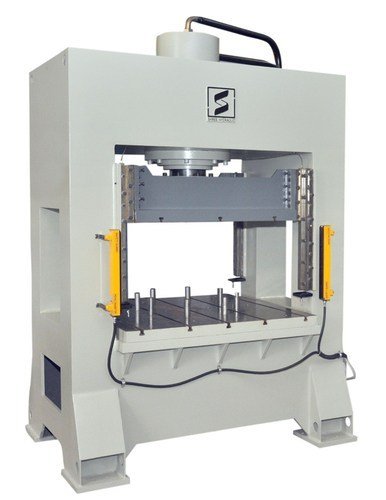How stuff works : Force and pressure in hydraulic and pneumatic system
This is Part 2 of my Pneumatic and Hydraulic systems post.
Pneumatics and hydraulics use force to make something work or move.
- A force can be a push or pull force. A force will change the velocity of an object, that is, it will change how fast an object moves. This means that a force can make an object start moving if it is still, stop moving, speed up, slow down or change direction.
- Pressure is the force on an object divided by the area over which the force is spread. Pressure takes into account the area over which the force is acting. A force spread over a big area will give a low pressure. The same force spread over a smaller area will give a higher pressure.

Image source
Pascal’s principle and hydraulics
Pascal’s principle states that pressure exerted on one part of an hydraulic system will be transferred equally, without any loss, in all directions to other parts of the system. Therefore, based on Pascal’s principle, when there is an increase in pressure at any point in a confined fluid, there is an equal increase at every other point in the container.
Applications of Pascal’s principle:
- A siphon (water is sucked through a pipe)
- Hydraulic presses (e.g. to jack cars up in a garage)
- Braking systems of most cars and trucks: the force of the driver’s foot is amplified
- In artesian wells (a pumpless water source that uses pipes to allow underground water that is under pressure to rise to the surface)
- Water towers and dams: a smaller area will result in a higher pressure.
The hydraulic press
In simple words, an hydraulic press is a machine that makes use of pressure exerted on fluids in a hydraulic system to crush or compact something. The concept of the hydraulic press is also based on Pascal’s principle: if there is an increase in pressure at any point in a confined fluid, there is an equal increase at every other point in the container. This means that when pressure is applied on fluids in a closed system, the pressure throughout the system remains constant. This advantage is made possible by two characteristics of liquids, namely that they cannot be compressed and that they distribute pressure equally.
Uses of hydraulic press:
- Hydraulic presses are used for industrial purposes, e.g. transforming metallic objects into sheets of metal.
- It can also be used for mechanical tasks:
- Crushing old cars: in this process, an hydraulic motor applies a large amount of pressure on the fluids in the cylinders of the system; the fluid pressure makes the plates rise and this drives a plate on to the car to crush it.
- Fat-free cocoa powder: processing of cocoa beans produces a liquid known as chocolate liquor. To make fat-free cocoa powder, this liquid is squeezed in a hydraulic press to remove the cocoa butter. The remaining liquid is processed further to make cocoa powder.
- During the process of making the steel parts of tools, an hydraulic press is used to give shape to the steel, e.g. shovels.
The hydraulic jack
A jack is a device that uses force to lift heavy loads. The primary mechanism with which force is applied depends on the type of jack, but a typical jack uses a screw thread or hydraulic cylinder. Mechanical jacks, such as car jacks and house jacks, lift heavy equipment. Hydraulic jacks are usually stronger and can lift heavier loads higher. These include bottle jacks and floor jacks.
How a hydraulic jack works
A hydraulic jack makes use of oil in its mechanism. Oil has an advantage over air as it cannot be compressed, so it is possible to jack up vehicle or other loads safely. The large piston can be stopped at any point in its movement and it will stay there. This is not possible with compressed air. A piston connected to the jack handle moves up and down. This piston has a smaller diameter and forces oil from the reservoir through a one-way valve into the cylinder of larger diameter. So, the operator only needs to apply a small force to raise the heavy load. To lower the load, the one-way valve is released and the vehicle’s weight forces the oil back into the reservoir.

Source
Hydraulic jacks depend on force generated by pressure. If two cylinders (a large one and a small one) are connected and force is applied to one-cylinder, equal pressure is generated in both cylinders. When one cylinder has a larger area, the force that the larger cylinder produces will be higher, although the pressure in two cylinders will remain the same. Hydraulic jacks depend on this basic principle to lift heavy loads: they use pump plungers to move oil through two cylinders. The plunger is first drawn back, which opens the suction valve ball within and draws oil into the pump chamber. As the plunger is pushed forward, the oil moves through an external discharge check valve into the cylinder chamber, and the suction valve closes, which results in pressure building within the cylinder.
Bibliography & Extra reading:
- Force and motion
- Force, mass & acceleration
- Pressure
- Forces & pressure
- Pascal's principle and hydraulics
- Pascal
- Hydraulic theory
- Hydraulic press
- Hydraulic motor
- What are hydraulic presses?
- How hydraulic jacks work
- Jack - wiki
- Design of hydraulic jack
- Hydraulic jack design pdf


Nice article.